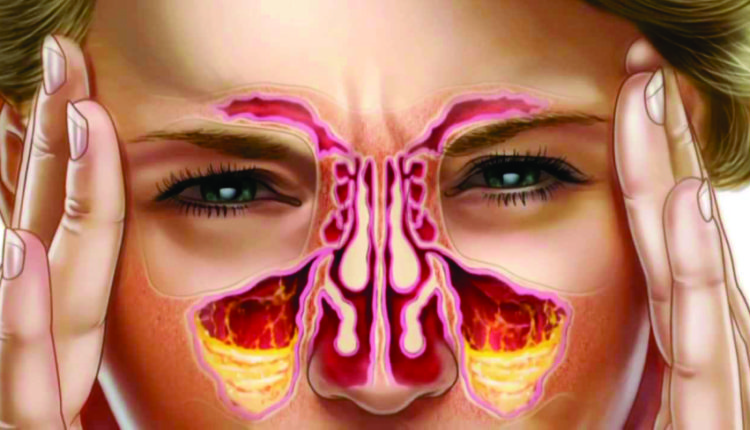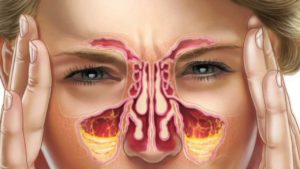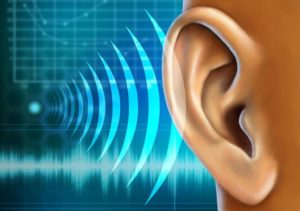Suffering From Sinus? Here’s How To Keep It At Bay…
What Is Endoscopic Sinus Surgery ?
Endoscopic sinus surgery – also called endoscopy or sinoscopy – is a procedure used to remove blockages in the sinuses (the spaces filled with air in some of the bones of the skull). These blockages cause sinusitis, a condition in which the sinuses swell and become clogged, causing pain and impaired breathing.
A thin, lighted instrument called an endoscope is inserted into the nose, and the doctor looks inside through an eyepiece. Much like a telescope with a wide-angle camera lens, the endoscope beams light into different parts of the nose and sinuses, allowing the doctor to see what is causing blockages. Surgical instruments can then be used along with the endoscope to remove the blockages and improve breathing.
This surgery does not involve cutting through the skin, as it is performed entirely through the nostrils. Therefore, most people can go home the same day.
Endoscopic sinus surgery is a relatively new procedure designed to increase the amount of air flowing through the sinuses and allow mucus to drain properly out of the nose.
Chronic sinusitis and acute sinusitis have similar signs and symptoms, but acute sinusitis is a temporary infection of the sinuses often associated with a cold. At least two of the following signs and symptoms must be present for a diagnosis of chronic sinusitis:
- Drainage of a thick, yellow or greenish discharge from the nose or down the back of the throat
- Nasal obstruction or congestion, causing difficulty breathing through your nose
- Pain, tenderness and swelling around your eyes, cheeks, nose or forehead
- Reduced sense of smell and taste

Other signs and symptoms can include:
- Ear pain
- Aching in your upper jaw and teeth
- Cough, which may be worse at night
- Sore throat
- Bad breath (halitosis)
- Fatigue or irritability
- Nausea

The signs and symptoms of chronic sinusitis are similar to acute sinusitis, except they last longer and often cause more significant fatigue. Fever isn’t a common sign of chronic sinusitis, as it may be with acute sinusitis.
The procedure can : –
- Relieve nasal blockages.
- Relieve facial pain.
- Improve breathing.
- Improve the sense of smell and taste.
Endoscopic sinus surgery is an effective procedure to correct : –
- Sinusitis.
- Deviated septum, in which the partition separating the left and right sides of the nose is crooked.
- Polyps, a noncancerous water-filled swelling.
- Tumors, a swelling caused by an uncontrolled growth of cells.
However, it seems to be less effective for those with post-nasal drip or allergies that are caused by airborne particles which cannot be avoided, such as dust and ragweed.
Facts about endoscopic sinus surgery : –
- 80% to 90% of people report a considerable reduction in symptoms after endoscopic sinus surgery.
- Endoscopic sinus surgery was introduced in the 1960s but did not become widely used in the U.S. until the 1980s.
- The endoscope, which utilizes fiberoptic technology, allows doctors to see inside the sinuses without cutting the face, and makes it possible to see parts of the sinuses that were formerly difficult to reach.
- 35 million Americans – about 14% of the population – experience symptoms of sinusitis every year.
- It is estimated that 1% to 2% of adults in the U.S. have lost their sense of smell and taste to a significant degree.
What Conditions Are Treated With This Surgery ?
Endoscopic sinus surgery is used to treat : –
- Sinusitis
- Deviated Septum
- Polyp
- Tumors
Sinusitis:-
Sinusitis is a common condition that usually is easy to treat with medication. It feels much like a head cold, with a blocked, stuffy, or runny nose.
Sinusitis is actually a swelling of the inner lining of the sinuses. This swelling causes the openings of the nose to be blocked so that the mucus inside can no longer drain out. When the mucus cannot drain, the pressure of the blocked fluid creates pain in the face and impairs breathing.
For most people, sinusitis is a temporary condition that goes away with simple treatment. If the symptoms continue for a significant period of time without responding to medication, or if the symptoms are especially severe, surgery may bring about permanent relief.
However, surgery for sinusitis is considered a last resort and will not be recommended unless all other courses of treatment have been exhausted over a period of time with little or no results.
Sinusitis can be the result of : –
- A cold that lingers.
- A bacterial or viral infection.
- Swelling due to allergies.
- Having small sinus openings.
Deviated Septum:-
The partition separating the left and right sides of the nose, called the septum, is sometimes crooked. This crooked condition is called a deviated septum. Some people are born with this abnormality, but sometimes it is the result of an injury. Very few people have a perfectly straight septum, but endoscopic sinus surgery is only recommended for those whose septum is crooked enough to cause significant sinus blockage. The surgery can then straighten the septum and improve breathing.
Polyps:-
A polyp, also called a cyst, is a benign (noncancerous) water-filled swelling about the size of a grape, which develops in the sinuses and causes blockage. They most frequently occur in people who have asthma. Polyps can sometimes be reduced in size with medication. However, endoscopic sinus surgery has proven to be an excellent method with which to remove polyps and restore normal breathing.
Tumors:-
A tumor is a swelling caused by an uncontrolled growth of cells that creates new tissue. It is not water-filled like a polyp. A tumor can be noncancerous or cancerous. Tumors in the sinuses are quite uncommon but can sometimes be removed with endoscopic sinus surgery. However, more extensive surgery is often necessary.
About The Sinuses
The sinuses are spaces filled with air in some of the bones of the skull. Air passes in and out of these spaces, and mucus drains through them and out of the nose. They also reduce the weight of the skull and give our voices a nicer sound.
There are four main pairs of sinus openings, sometimes called sinus cavities, in the face : –
- Maxillary – in the cheekbones.
- Ethmoid – between the eye sockets.
- Frontal – in the forehead and above the eyebrows.
- Sphenoid – deep in the head at the back of the nose.







